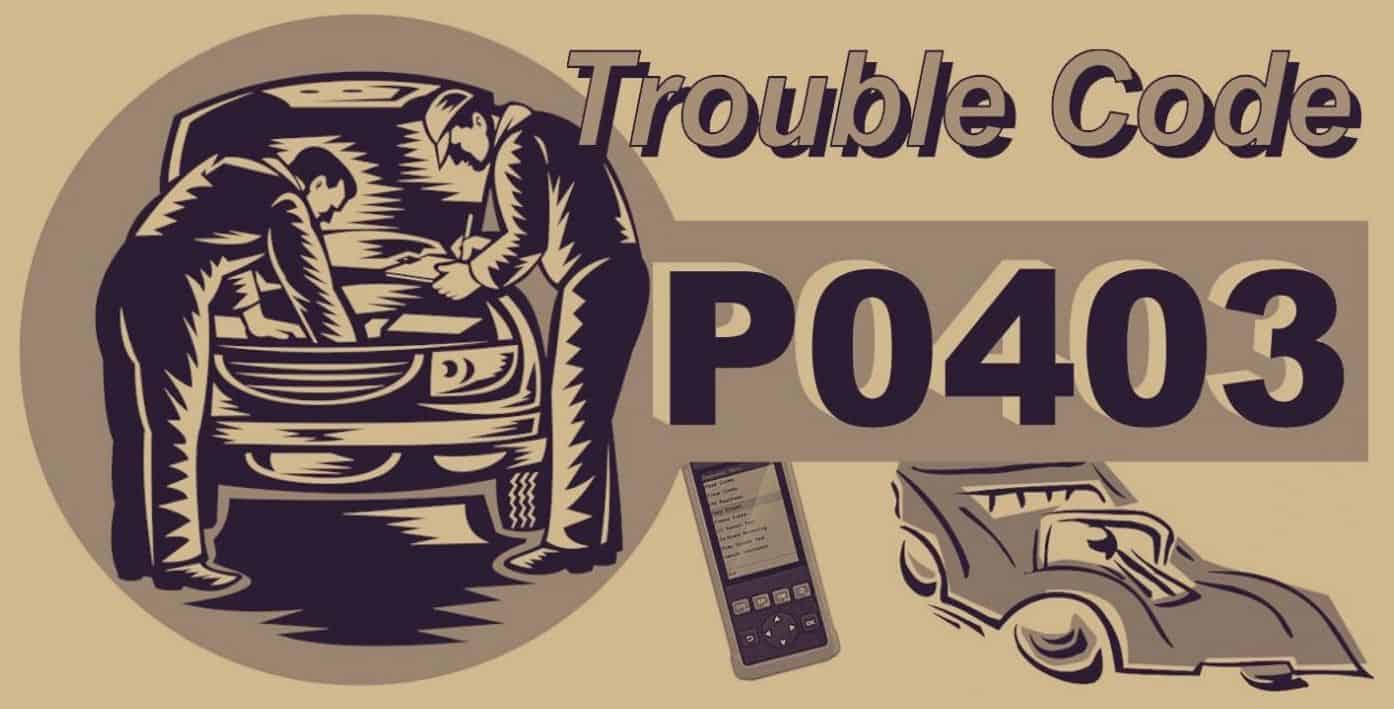Are you suffering “check engine” lights with the code P0403? Don’t panic, it might be much simpler than you think. If you have no idea how what it means, you’re in the right place!
Today, you’ll learn everything you need to know about the P0403 code: exhaust gas recirculation (EGR) circuit malfunction.
What Is the Code P0403?
This code is a general onboard diagnostic (OBD) code for vehicles. It indicates that the EGR circuit has malfunctioned or stopped working. This code belongs to a large list of diagnostic codes of close numbers.
OBD codes are called general because they apply to all brands and car models that are newer than 1996. This means that these codes indicate the same issue and they’re usually fixed in the same way.
However, in rare cases, there might be a few differences between the various models in terms of how to fix it.
What is the Relationship Between the EGR and Code P0403?
When the engine is working, the fuel burns through an ideal oxidation reaction. This reaction goes like this:
The oxygen from the air (O2) reacts with organic fuel (simplified as CH) to give out carbon dioxide gas (CO2) and Water (H2O).
These gases are expelled through the vehicle’s exhaust. Unfortunately, overheating of the engine make this reaction hard to achieve ideally. This leads to incomplete burning of the fuel.
Also, Factors like temperature, air pressure, and humidity change affect the final result of the reaction.
These changes affect this combustion reaction and make it hard to achieve. As a result, the nitrogen gas (N2) gets oxidized into different nitrogen oxides. These oxides pollute the environment, causing acid rain and respiratory problems.
The EGR’s job is to prevent this from happening. It works by lowering the temperature of the fuel combustion.
It also reintroduces the unburnt fuel into the engine for complete combustion. They achieve this by recirculating non-reactive gases from the exhaust back into the cylinders.
These gases are responsible for lowering the reaction temperature while burning at a much slower rate. This way, only oxygen burns with the car fuel.
The EGR features a valve that redirects these exhaust gases into the cylinders. This valve is controlled by a power control module (PCM). If the EGR works by applying a vacuum, the PCM is responsible for applying that vacuum by opening the EGR solenoid(s).
These solenoids open at a different time and for various durations according to the conditions of the reaction as needed. They’re mounted on the
If the EGR solenoid(s) doesn’t respond to the PCM, it reads out the code P0403 and the “check engine” lights are displayed on the dashboard.
What Causes the P0403 Code?
Many factors cause the P0403 code. Here’s a list of these reasons:
- Defective EGR solenoid (the most common reason)
- A poor electrical connection of the EGR solenoid
- Loose or corroded pins
- The EGR solenoid is shorted
- Failure of the EGR valve
- Water interrupts the solenoid
- A shorted power control module
- A leak in the EGR vacuum line
Another Troubleshooting Code about Exhaust Gas Recirculation (EGR)
P0401 CODE: Exhaust Gas Recirculation (EGR) Flow Insufficient
P0406 CODE: Exhaust Gas Recirculation (EGR) Sensor A Circuit High Input
What are the Symptoms That You Might Face Due to P0403 Code?
Usually, you’re not likely to notice any symptoms unless except for the “check engine” light. However, in some cases, you might notice some additional symptoms like:
- A rough engine start or misfires that goes away when the engine warms up
- In some rare case, the engine misfires when it’s hot despite starting smoothly
- Intermittent engine stalls
- Fuel smell coming out of the exhaust
How Can You Fix the P0403 Code?
Here’s a list of the things that should fix this code:
- Replacing the faulty EGR vacuum solenoid
- Rewiring the solenoid’s electrical connections accurately
- Replacing the corroded or loose pins
- Replacing the leaking vacuum line
How Do Mechanics Diagnose Code P0403?
- They use a special tool (OBD-II scanner) to freeze the frame data stored in the PCM
- They check for any malfunctioned or faulty electrical connections to the EGR solenoid
- They test the EGR temperature sensor
- They disconnect the EGR solenoid to check for electric shorts or open circuits
- They ensure that there isn’t any corrosion on the connecting pins
After clearing the code, they take the vehicle on a test drive to ensure that the problem doesn’t return.
Wrap Up
With that said, you now have a better understanding of the P0403 code. As you can see, the range of symptoms in this code is vast.
This means that it can be as simple as illuminating “check engine” light all the way to a dying engine that can be a bit serious on the road.
Such a code should give you more than enough time to reach a place where you can check it safely. However, the sooner you fix it, the better!
James is a certified auto technician specializing in commercial vehicles. With 30 years of experience under his belt, James has encountered almost every type of automotive issue there is! Besides his day job at the repair shop, he is also an amateur race car driver.


Thanks James, excellent to know the cause of p0403, fixed my problem, car going well..
Thanks, have a great New Year..